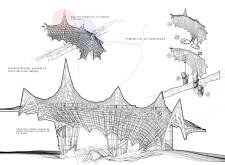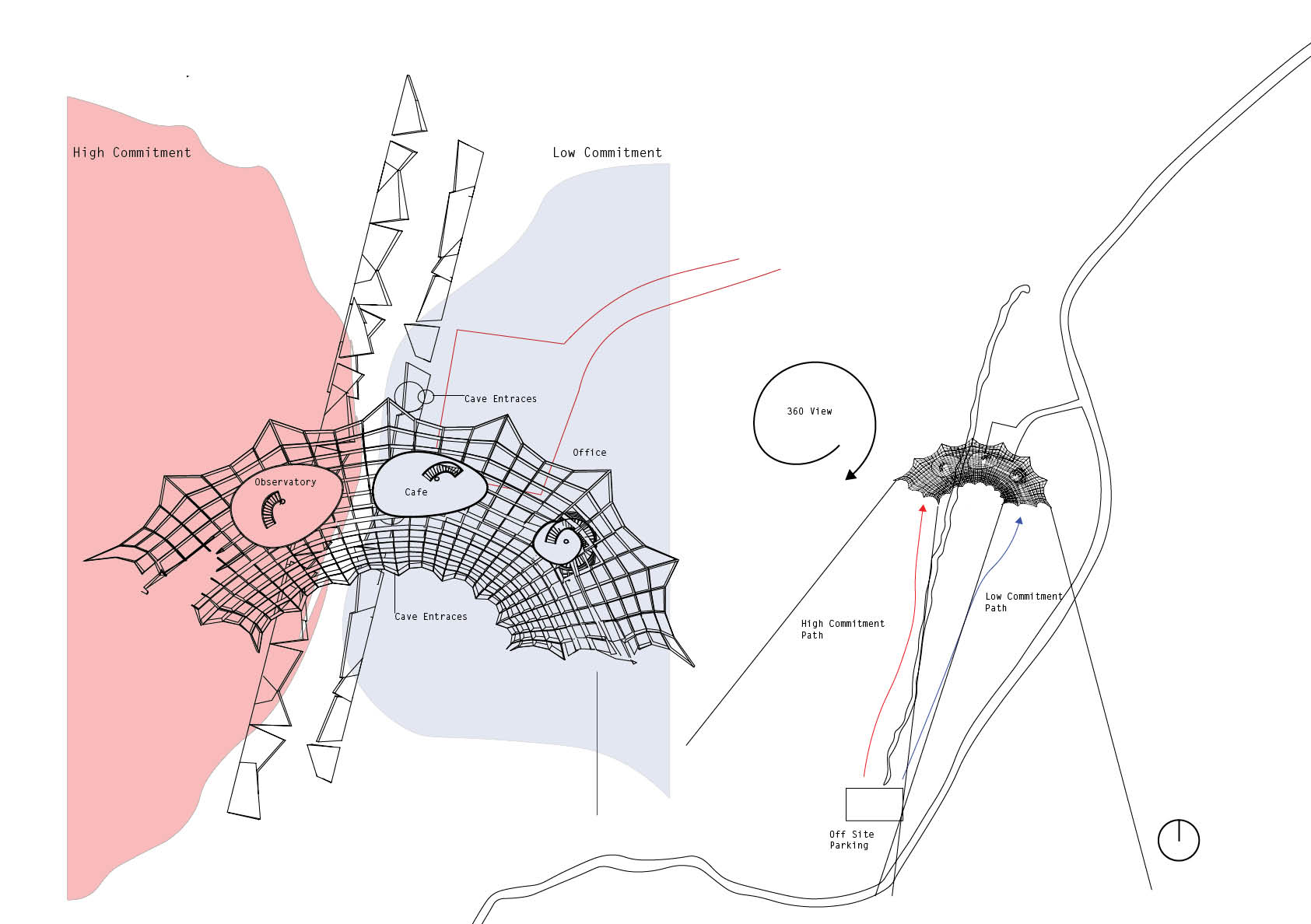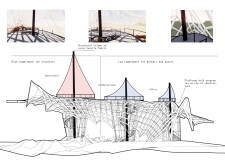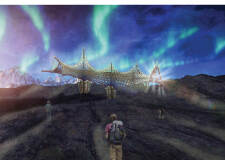5 key facts about this project
The design titled "Crevasse Divides Program to Force Decision Making" is situated in a landscape shaped by glacial influences. The concept emphasizes how the arrangement of spaces can guide user choices and enhance interactions. The project features a strong structural framework that connects different areas while anchoring a tensile design to the ground.
Design Concept
At the center of the design is a sturdy substructure that links various components while providing essential support. The sharp forms evoke the appearance of ice formations, creating a visual synergy with the natural surroundings. This approach aims to merge the architectural elements with the landscape, showcasing a thoughtful response to the environment.
Programmatic Arrangement
The layout divides spaces into categories based on user engagement levels. High commitment zones include an observatory, a cafe, cave entrances, and pathways that invite exploration. The observatory encourages visitors to connect with expansive views of the landscape. The cafe acts as a gathering space, fostering social interaction among users. Cave entrances add an element of adventure, allowing individuals to discover hidden features within the project.
Functional Spaces
Low commitment areas cater to the needs of workers and guests. Offices, restrooms, and additional cafe facilities ensure that practicality is not overlooked. This thoughtful distribution of spaces accommodates a range of users. It promotes comfort and accessibility while maintaining a unified design theme.
Structural Integrity
The project maintains its stability through columns that secure the tensile fabric in place. Platforms support various programmatic areas and are positioned strategically within the substructure. This combination allows for a layered interaction with the landscape. The integration of these structural components highlights a connection between nature and the built environment.
From the observatory, the view opens up across the landscape, creating a sense of place that invites users to engage with their surroundings. The design reflects a balance of function and environment, offering a clear response to both user needs and the site’s unique context.






















































